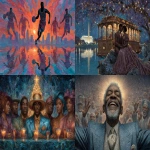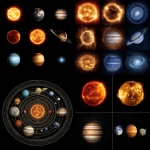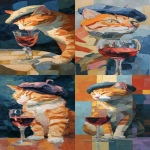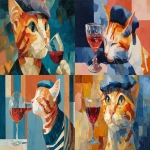Explore the Best AI Image Gallery

5G: The Unseen Hand Shaping the Future of Creativity
The creative landscape is on the cusp of a dramatic transformation, fueled by advancements in technology, particularly 5G. This high-speed network promises unprecedented connectivity, paving the way for immersive experiences, real-time collaboration, and innovative artistic expressions that were once confined to the realm of science fiction.
A Canvas Amplified: 5G and Immersive Experiences
5Gs low latency and high bandwidth capabilities are a boon for creative industries reliant on immersive technologies. Augmented reality (AR) and virtual reality (VR) applications will become more seamless and interactive, blurring the lines between the physical and digital worlds. Imagine artists sculpting in 3D within a virtual environment, collaborating with others in real-time, or viewers experiencing artworks that respond to their movements and emotions.
The impact extends beyond visual arts. 5G can enhance audio experiences, enabling spatial audio for concerts and live performances, allowing audiences to feel truly immersed in the soundscape. Interactive sound installations could become a reality, responding to user input and creating unique sonic journeys.
Breaking Down Barriers: Real-Time Collaboration Reimagined
5G empowers artists and creatives to collaborate seamlessly across geographical boundaries. Imagine designers sketching prototypes together in real-time, musicians composing music collaboratively from different locations, or film directors sharing their vision with a global team instantly.
This enhanced connectivity fosters cross-cultural exchange and inspires fresh perspectives, leading to more innovative and diverse creative outputs. 5G facilitates the democratization of creativity, providing access to tools and resources for individuals regardless of their location or background.
The Algorithmic Muse: AI and 5G Synergy
The convergence of 5G with artificial intelligence (AI) opens exciting possibilities for creative exploration. AI algorithms can analyze vast datasets, learn patterns in artistic styles, and generate novel content. This can assist artists in exploring new ideas, overcoming creative blocks, or even co-creating with machines.
Imagine AI assisting musicians in composing melodies, helping writers brainstorm plot points, or aiding visual artists in generating unique textures and patterns. 5Gs speed enables real-time feedback loops between AI and human creators, fostering a symbiotic relationship that pushes the boundaries of artistic expression.
Navigating the Ethical Landscape
The rapid evolution of 5G technology brings forth important ethical considerations. Data privacy and security are paramount concerns, especially when dealing with sensitive creative content. Ensuring responsible use of AI in creative processes is crucial to avoid biases and unintended consequences.
Furthermore, access to 5G infrastructure and its benefits should be equitable, ensuring that the digital divide does not widen further. Its essential to foster a dialogue among artists, technologists, policymakers, and the public to navigate these ethical challenges responsibly.
The Future of Creativity: A Connected Canvas
5G is more than just a technological advancement; its a catalyst for transforming the creative landscape. By empowering immersive experiences, facilitating real-time collaboration, and enabling AI integration, 5G opens up a world of possibilities for artists, designers, and innovators.
As we venture into this new era, embracing these technologies responsibly while addressing ethical concerns will be crucial to unlock the full potential of 5G and shape a future where creativity knows no bounds.







](https://images.ai-img.art/thumbnails/150/260677129d2c46fe9bdcbbff4144d405cfa8008820dee8a07e3068200c571192.webp)

](https://images.ai-img.art/thumbnails/150/55169272518a8117115ceda114880b508b4a5360f78be1552edff0885f41865d.webp)


](https://images.ai-img.art/thumbnails/150/5bb53813525a01ea6eece43958b78c6246b8f519a6f0b403f1917a9b4b415669.webp)



](https://images.ai-img.art/thumbnails/150/6ffdbc0b6dc15dea192ca9cbda465109ecddf62e9ec778093efccc3f14882875.webp)




](https://images.ai-img.art/thumbnails/150/b897827a7c0272a0b1622535fad757a51cc9ef2b6a6b818f379c915bd371410f.webp)

](https://images.ai-img.art/thumbnails/150/bb1853a5562dac6ce4147930b6ae244bde3d0b3ac0b5e7d7f8260ba3ee1c9fd0.webp)






](https://images.ai-img.art/thumbnails/150/21ff805a298f4e4e7760586889f0c1501ab8b345912561e1bc22f6404ea55654.webp)








](https://images.ai-img.art/thumbnails/150/cb274e1995141236d440406817470b4f500ada40f30d959043c7479ad57816c5.webp)





](https://images.ai-img.art/thumbnails/150/81d434c2a328068dd547c0484ec4bbd97d586706f0fd69d8211261f5efd2469f.webp)



](https://images.ai-img.art/thumbnails/150/a64ac05292d4851d815b82372018deffa0fc1470d95166b9135847a86f342f27.webp)